You may have established your business locally and now want to expand into international markets, or perhaps you’re looking to attract global clients that better align with your company’s growth strategy.
Whatever the reason, generating international leads can often become a roadblock to success—especially if you have a strong product, numerous case studies, and a proven track record of success.
In situations like this, all you need is a focused strategy to unlock new markets and tap into global business prospects.
If you’re facing these challenges and are seeking international leads to effectively convey your message, this guide has you covered.
As a content marketer and lead generation expert, I’ll share the best practices used by major companies and the strategies I personally use to generate international B2B leads—approaches that truly work.
In this guide, I’ll break down the most effective lead generation strategies and platforms to help you determine which ones best suit your business.
I believe, that opportunities are everywhere and I even try all the platforms and best practices to generate business.
So, you should focus on almost all of these strategies discussed below because you never know from where you will get your first client.
Once you have the data, you can double down on the strategies that bring you the most business while keeping costs low.
Let’s begin:
On this page
Know your ideal customer:
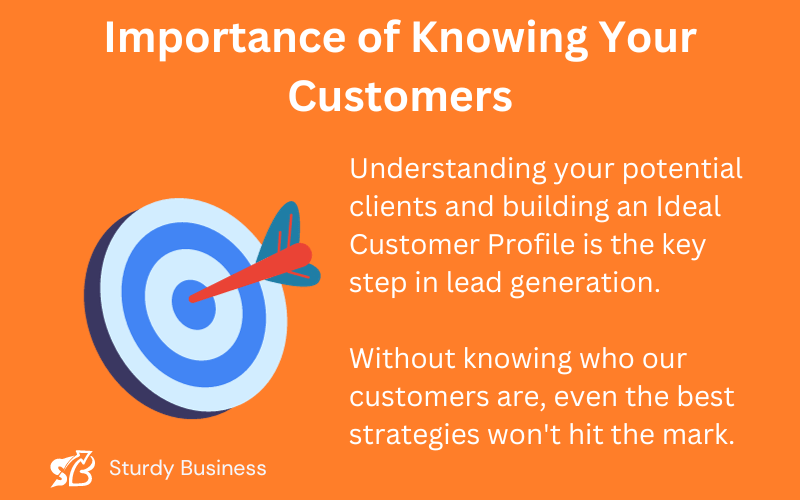
The core philosophy of marketing is delivering the right message to the right person. – Junaid Raza
As you know, lead generation involves identifying and cultivating potential customers or clients. Therefore, understanding your target audience and building an Ideal Customer Profile (ICP) is a critical first step.
It may seem obvious, but many businesses don’t fully understand who their customers are, let alone what makes them ideal. You can have all the lead generation strategies and assets in place, but they won’t be effective if you’re not targeting the right audience.
For instance, you might be a call center in India, the Philippines, or South Africa and you’re targeting e-commerce businesses in the USA. If you’re targeting every e-commerce business, or you’re targeting every employee of a company, you’re wasting your resources.
Targeting marketing saves you time, money, and resources.
That’s why developing a strong ICP is crucial.
An ICP is a detailed description of the characteristics and traits that define a business’s ideal customer. This involves identifying and understanding the demographic, psychographic, and firmographic attributes of the customers who are most likely to benefit from and engage with your product or service.
For instance, understanding their company size, industry, and business challenges (pain points) is essential when creating a buyer persona. Similarly, knowing which professional platforms they frequent—such as LinkedIn or industry-specific forums—is equally important.
There are numerous resources you can leverage to collect this data, including reports, surveys, and interviews with companies already present in those markets.
Going this deep into your research will help you understand how your target audience will respond to your copy and which messages will resonate most.
Once you have the ICP ready, let’s dive into the best practices for generating international leads.
Here are the top 9 strategies that every business owner can leverage to get international leads.
To generate international leads, especially when you can’t engage one-on-one or attend conferences and events—some of the most effective strategies for building relationships and driving business—you still have alternative strategies that can bring business to your doorstep.
We categorize them into:
- Inbound lead generation strategies
- Outbound lead generation strategies
Both are effective methods used by large corporations, small businesses, and can be utilized by startups or solopreneurs.
Let me explain the difference between inbound and outbound lead generation strategies and how they can help you expand your business internationally.
With inbound lead generation, you set up funnels that automatically attract leads when they need your services. For instance, you may publish a guide or a social media post that resonates with your potential clients, prompting them to reach out to you via social media or email.
On the other hand, outbound lead generation involves actively reaching out to potential clients through emails, calls, or messages to present your offer.
Both methods can be effective when done correctly, and that’s why we’ll be discussing both in detail!
Attract Inbound leads with SEO:
There are numerous inbound marketing strategies to generate international leads, but (search engine optimization) SEO consistently ranks at the top. You might wonder how and why.
Essentially, SEO involves optimizing web pages for search engines.
For instance, when you create a webpage targeting your ideal customer profile (ICP) and optimize it for search engines like Google, Bing, Yahoo, Baidu, or even AI-driven platforms like ChatGPT and Perplexity, you increase your visibility across multiple global search engines.
For instance, I use Semantic SEO and it helps me drive traffic from all search engines.
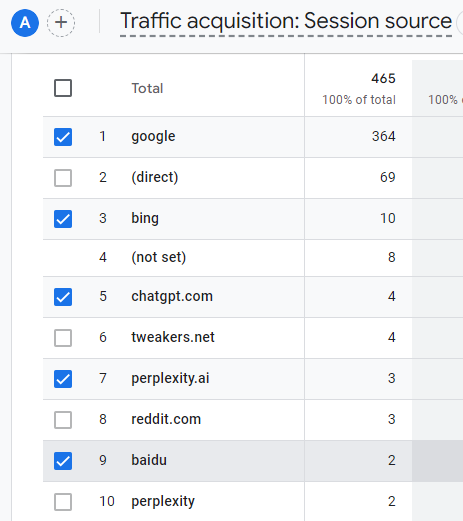
The key advantage is that one well-optimized page can attract potential clients from across all search engines.
Additionally, the conversion rate for this type of traffic is typically higher due to the nature of organic search—people often use search engines when they are actively seeking solutions or ready to make a purchase.
By targeting this traffic, you can utilize a sales funnel or landing page to capture leads.
For instance, if they land on your B2B service page, they can easily reach out through a contact form or email.
As an example, many clients reach out to me after landing on my B2B SEO services page.

You can also use tools like newsletters or push notifications to stay connected with potential leads.
If you offer something valuable, they will subscribe.

These tactics are crucial for brand awareness and can significantly contribute to generating business.
There are a few other benefits you get when you leverage SEO.
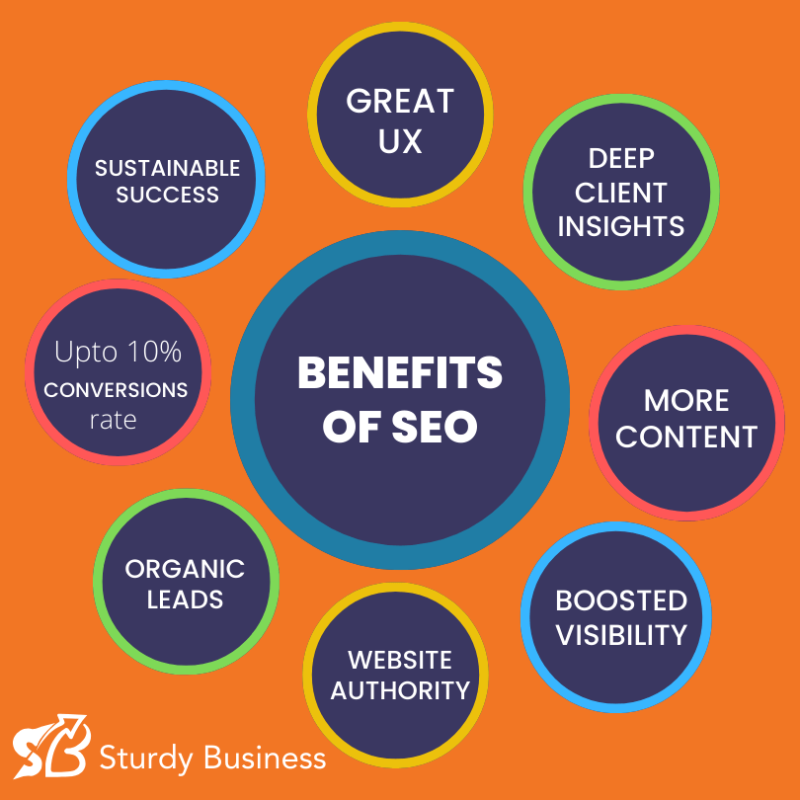
To generate international leads using SEO, follow these key steps:
- Content strategy: This is the first and most important step to generate leads with any strategy. As I often say, it’s not the content that’s king, but the strategy that makes it king.
Plan how you will leverage this strategy to drive traffic, generate leads, and maximize conversions.
Frankly, if you’re not an SEO expert or don’t have an in-house team, you won’t get the best results. So, if you’re new to digital marketing, it’s better not to do it yourself unless you understand it well. Consider hiring an in-house team or hiring an SEO company to outsource your inbound lead generation strategy. - International keyword research: In this step, you’ll identify keywords that people use to search for your products or services. For example, if you’re a tech company in Tunisia and want to attract clients from the USA or UK, use keyword planning tools like Google AdWords, Semrush, or Ahrefs to find relevant keywords that people in those regions might use to search for your services. Make sure you have a strong set of keywords.
- Optimize for local search engines: Google may dominate globally, but if you’re targeting countries like Russia or China, you should also optimize your website for Baidu (China) and Yandex (Russia).
- Multilingual SEO: In countries like Russia or China, people often search for solutions in their native language. So, you should create content in the local languages of your target markets and use hreflang tags to ensure the right version of your content appears in each region.
- Localized content: Tailor your content to match the cultural preferences of each market. This improves engagement and builds credibility. For instance, if you’re writing for an American audience, write in American English and use their jargon (when relevant). This helps search engines understand your content and makes your audience feel more connected to your brand.
- Build international backlinks: Earn backlinks from authoritative websites in your target countries to boost your rankings and domain authority.
- Track and adjust: Monitor your performance using Google Analytics and adjust your strategy based on the metrics that matter—such as organic traffic, conversions, and leads.
After that, it will take a few months to see significant results (if executed properly)!
For instance, we started working on this project a 2.5 months and it’s getting a few hundred visitors a month. And it will reach its optimal potential in the following few 6 to 8 months.
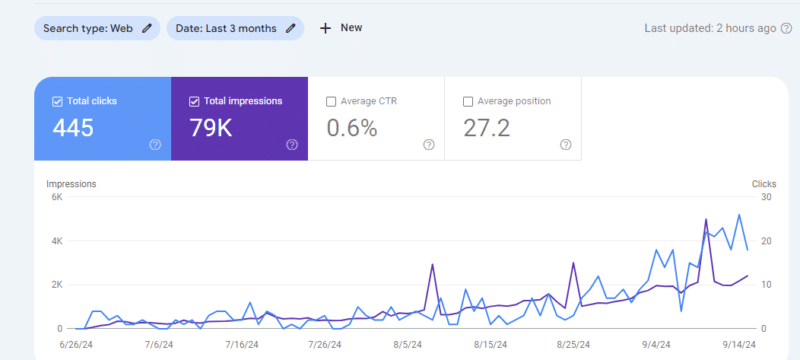
You can also check out this one.
I published this copy a month ago, and it’s now ranking in multiple countries. In the same way, you can target various countries and generate leads.
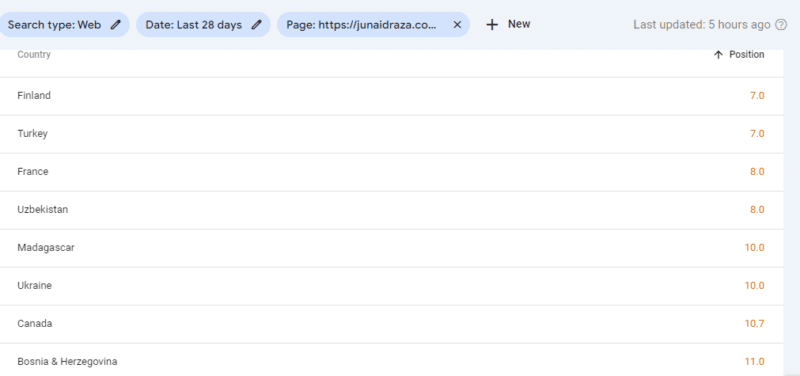
Social media marketing:
Another powerful inbound marketing strategy is leveraging social media platforms. With billions of users on social media, it’s safe to say that many of your potential clients are there, actively consuming content.
To tap into this, create content that resonates with your target audience, addressing their pain points and offering solutions. You can also implement sales funnels to guide prospects through the customer journey and convert them into leads.
To succeed, begin by developing an Ideal Customer Profile (ICP) and strategize your social media efforts to effectively generate leads.
I apply the same strategy that brings me inquiries on all the platforms.
Check out this one:

Here is my SMM strategy to generate international leads:
- Define your ideal customer profile (ICP): Identify the key demographics, pain points, and behaviors of your target audience, and focus on the social platforms they use most.
- Choose the right platforms: Select platforms that align with your business and audience. For B2B, use LinkedIn and Twitter; for B2C, prioritize Facebook, Instagram, or TikTok.
- Create targeted content: Develop engaging content that addresses your audience’s needs. Use multimedia like images and videos, and include educational posts, case studies, and testimonials.
- Engage with your audience: Respond promptly to comments and messages. Build relationships by participating in conversations and addressing feedback.
- Implement social media sales funnels: Guide your audience from awareness to conversion with targeted content and lead magnets. Use clear calls to action to drive leads.
- Leverage user-generated content: Encourage followers to share their experiences. Feature user-generated content to build trust and authenticity.
- Build partnerships and collaborations: Partner with influencers or industry businesses to reach new audiences and enhance your social media presence.
Run ads:
Paid advertisement is another effective lead-generation marketing strategy. With paid marketing, you can quickly generate a lot of leads. Unlike other strategies, you don’t have to wait for results; you will surely generate quick international leads within a couple of hours or days, depending on your budget.
In paid marketing, you can spend as little or as much money as you want on paid searches and paid social media marketing.
Search engine advertising (SEM) is a good thing to incorporate into any other digital marketing strategy that aims at generating leads quickly, like:
- Make lead generation more powerful
- Target any country, city, or town for leads
- Set your price for every click-through
- Manage overall spending
Cold outreach:
This is an outbound lead generation strategy and is the secret recipe of many companies.
Here’s how I do it:
- Define your buyer persona: Start by creating a detailed profile of your ideal customer within the BPO industry. This includes their company size, location, and key decision-makers.
- Collect data: Utilize tools like LinkedIn Sales Navigator, industry databases, and Google Ads to gather a comprehensive list of potential leads. Pay special attention to companies actively investing in advertising, as they are likely to be more receptive.
- Craft personalized outreach: With the data collected, craft tailored cold emails and messages. Highlight how your solutions address their specific needs and pain points. Ensure each message is personalized to resonate with the recipient.
- Engage through multiple channels: Complement your email outreach with follow-up calls. This multi-channel approach increases your chances of connecting and engaging with prospects.
- Scale your efforts: For optimal results, execute this strategy at scale. Automate where possible, but maintain a level of personalization to ensure your outreach remains effective.
- Track and optimize: Monitor the performance of your outreach campaigns. Analyze metrics such as open rates, response rates, and conversions. Use this data to refine your strategy and improve your results over time.
However, this strategy is not without its challenges. Potential problems include reaching out to unqualified leads, dealing with high rejection rates, and managing a large volume of outreach effectively.
To overcome these issues and run campaigns effectively, it’s crucial to involve an expert with experience in outbound lead generation.
An expert can help ensure that your campaigns are well-targeted, your messaging is compelling, and your overall strategy is optimized for success.
Develop Relationships with Local Companies:
Local companies can be invaluable allies when expanding your business into a foreign market.
They provide qualitative and quantitative data about their local market. You can also join forces with them to increase your brand’s visibility and generate more leads.
Collaborate with local influencers:
An effective strategy for generating international leads includes collaborating with local influencers. For instance, identify popular podcasters in your target regions and explore opportunities to participate in their shows. Engaging in podcast interviews can help you reach a new audience and establish credibility.
Alternatively, connect with social media influencers relevant to your industry and consider sponsoring their content. When influencers share information about your business and its benefits, it leverages their established audience base to boost your reach and drive leads.
This approach is a powerful marketing strategy for acquiring international leads, as it taps into the trust and engagement that influencers have built with their followers.